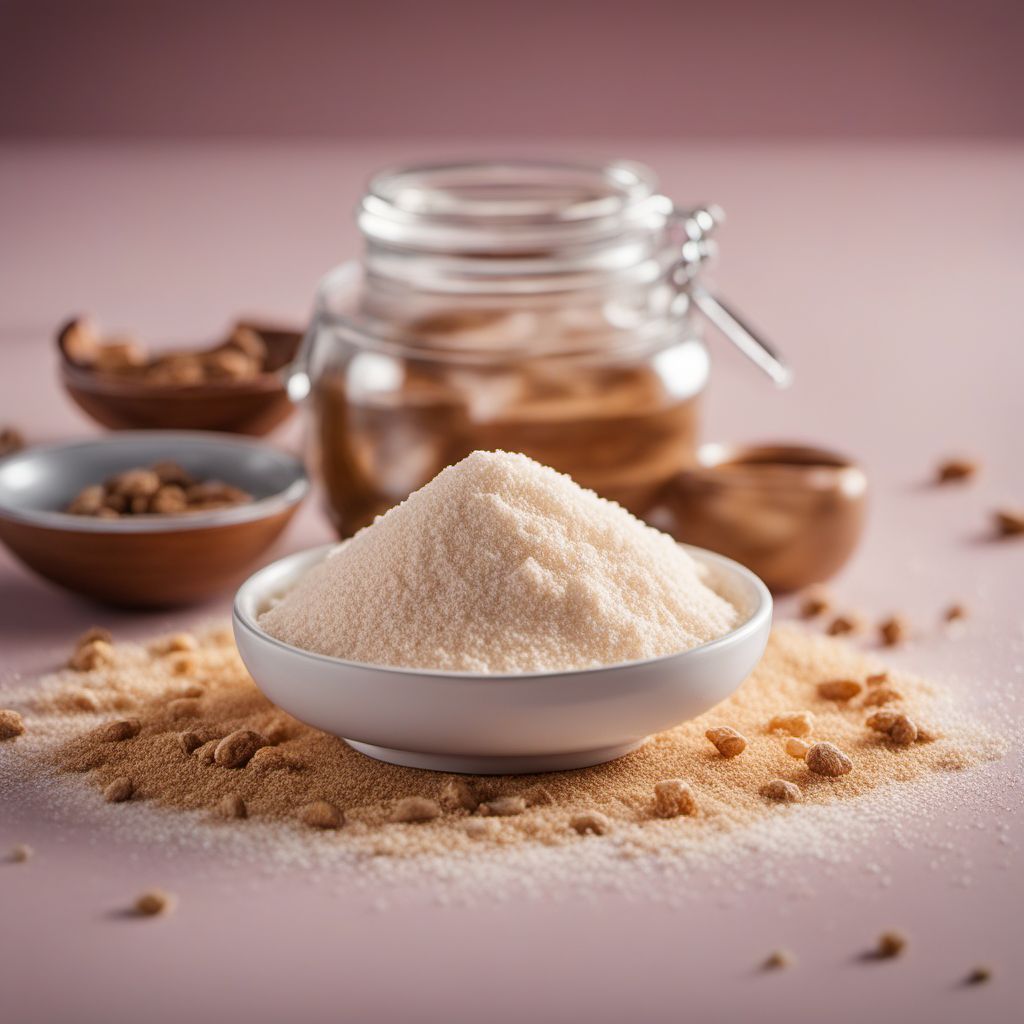
Ingredient
Table-top sweeteners in powder form
The Sweet Essence of Powdered Sweeteners
Table-top sweeteners in powder form are finely ground sweeteners that dissolve easily and evenly. They come in various types, such as stevia, sucralose, or aspartame, and provide a concentrated sweetness without the bulk or calories of traditional sugar. These sweeteners are often used in baking, beverages, and as a sugar substitute in recipes for individuals with dietary restrictions or those looking to reduce their sugar intake.
Origins and history
The concept of powdered sweeteners originated from the need to provide a convenient alternative to traditional sugar. As concerns about sugar consumption and its impact on health grew, manufacturers developed various types of sweeteners in powder form. These sweeteners have become popular worldwide, offering a guilt-free way to enjoy sweetness in a wide range of culinary creations.
Nutritional information
Table-top sweeteners in powder form are typically low in calories or calorie-free, making them a suitable option for individuals following a calorie-restricted diet or managing their sugar intake. They do not contribute to tooth decay and may be a suitable alternative for individuals with diabetes or those looking to reduce their sugar consumption.
Allergens
Some powdered sweeteners, such as stevia or aspartame, may cause allergic reactions in sensitive individuals. It is important to read the labels and consult with a healthcare professional if you have any concerns or known allergies.
How to select
When selecting table-top sweeteners in powder form, look for well-sealed containers to ensure freshness and prevent moisture absorption. Check the expiration date to ensure the product is still within its shelf life. Additionally, consider your personal taste preferences and choose a sweetener that suits your needs, whether it's a natural option like stevia or a synthetic sweetener like sucralose.
Storage recommendations
To maintain the freshness and quality of table-top sweeteners in powder form, store them in a cool, dry place away from direct sunlight. Ensure the container is tightly sealed to prevent moisture absorption. Avoid storing them near strong-smelling substances, as they can absorb odors easily.
How to produce
Table-top sweeteners in powder form are typically produced by manufacturers using specialized processes to extract and refine the sweetening compounds. As an amateur, you can't produce these sweeteners at home, but you can grow and harvest plants like stevia to make your own natural sweeteners.
Preparation tips
When using table-top sweeteners in powder form, start with small amounts and adjust to taste, as they are significantly sweeter than sugar. They can be used in a variety of recipes, including beverages, baked goods, sauces, and dressings. It's important to note that powdered sweeteners may not provide the same texture or bulk as sugar in certain recipes, so adjustments may be needed. Additionally, some powdered sweeteners may lose their sweetness when exposed to high heat, so it's best to follow the manufacturer's recommendations for cooking and baking temperatures.
Culinary uses
Table-top sweeteners in powder form are commonly used as a sugar substitute in beverages like coffee, tea, or smoothies. They are also popular in baking, allowing individuals to enjoy sweet treats with reduced sugar content. Additionally, they can be used in sauces, dressings, and other recipes where sweetness is desired without the added calories.
Availability
Table-top sweeteners in powder form are widely available in grocery stores, supermarkets, and online retailers. They can be found in the baking aisle or the section dedicated to sugar substitutes.

